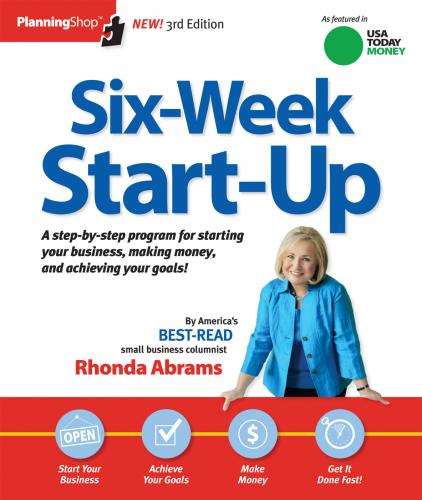If you decide you need investors, you’ll find more information in Week Five, including Questions to Ask before you accept financing (page 232) and a worksheet with an Investor Comparison Chart (pages 234—235).
When you build a business, you don’t spend a lot of time envisioning how you’ll eventually get out of it. Oh, maybe you think one day you’ll make enough money to retire, but while you can envision yourself sailing or gardening, what’s happened to your company? You need an “exit plan.”
An exit plan is a long-term strategy for transferring ownership of your company to others. The idea of thinking of an exit when you’re just starting out may seem incongruous. After all, you hardly know what you’re going to be doing next month; why try to figure out what you’re going to do with your company 10 or 20 years from now?
If you’re looking for an investor in your company, they’ll want to know your long-term goals and will ask you to spell out an exit strategy. They want to know how they’ll get their money back.
If you’re going to have a partner, then discussing your exit strategy reduces the friction that comes when you have unspoken but differing exit assumptions. You may hope to grow the business substantially and later sell, while they may want to maintain the business at a modest level and perhaps someday have a relative take over.
Even if you own the company yourself and hope to have it last through the ages, an exit plan helps direct the growth of your company. If, for instance, you would ideally like to be acquired by a larger company, you might target your product development and marketing efforts in ways that would interest acquiring companies.
There are a number of ways you can exit your company or have the value of the company become “liquid”:
RED TAPE ALERT!
A no-interest loan from a friend or family member may face what’s called “imputed interest” by the U.S. Internal Revenue Service. If the 1RS views the loan as a gift, the lender will have to pay taxes on the money if it’s more than the maximum allowed by law. All lenders must charge an interest rate that reflects a fair market value.
When you launch a business, it has an impact on everyone around you, especially your family. You’ll almost certainly have to make financial sacrifices, spend less free time with those closest to you, and have more things on your mind than before you started. If you’re married, owning a business may have legal and/or tax implications for your spouse.
Sit down and fully discuss your plans with the other people in your life who may be directly affected. Help them to understand what you see as the opportunities, while at the same time being clear about the potential risks and probable sacrifices.
Ask for their input, too. They may have suggestions of ways they can be supportive. In most small businesses, family members frequently lend a hand. Allow them to share some of their fears or concerns so you get a realistic idea of what’s on their minds. Discuss ways to make certain that your family responsibilities are met even while you build your business. Make them feel a part of your new, exciting adventure.
Be careful, however, about asking for loans or investments from family or close friends—you may risk both the business and the personal relationship. Of course, there are exceptions: If the person understands the nature of your business, truly appreciates the risks, and is someone with whom you can communicate well, the situation may work. Always have loan or investment papers drawn up with the terms of the repayment or investment absolutely clear.
You can find more information about getting and working with investors in Week Five.
One of the best, least-known services provided by the U.S. Government to small businesses is a national network of Small Business Development Centers (SBDCs). There are over 1,000 SBDCs, located primarily at universities and community colleges.
SBDCs provide free one-on-one counseling and low-cost training programs to small businesses and start-up entrepreneurs. SBDC counselors are trained professionals; most have run small businesses themselves as well as having expertise in particular aspects of management.
Almost all SBDC locations also maintain libraries with books and other materials to assist you in planning and running your business.
SBDCs serve over 700,000 small businesses a year in face-to-face counseling and training sessions, and another 500,000 businesses turn to them for information, resources, and call-in assistance. They’ve been doing this for more than 30 years.
SBDCs offer assistance with many of the following:
Check It Out
Great
